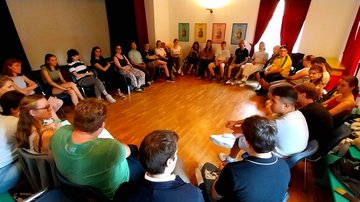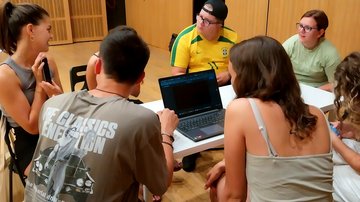Against forgetting: Faces of resistance from WWII in Slovenia
Against forgetting: Faces of resistance from WWII in Slovenia
Facts and figures regarding the youth encounter:
- Dates of the project: 18th July – 26th July 2025
- 26 participants from four countries: Germany, Poland, Slovenia and Hungary,
- Age: 18 to 26 years old
- Programme highlights: 'Stari Pisker', a former Gestapo prison, Torture Camp in Celje, sowie Massgraves in Kocevje, the Museum of National Liberation in Maribor.
- Partner organisations: Zachor Foundation for Social Remembrance, National Youth Council of Slovenia, College of Eastern Europe, Zachor Foundation of Social Remembrance
The Youth Encounter in Slovenia “Against forgetting: Faces of Resistance” took place from 18th till 26th of July. The activities were based in Maribor city with multiple day trips to Ljubljana, Kočevje forest and Celje.
The goal of the youth exchange was to explore in depth the history of Slovenia during the Second World War, learn about the resistance movement, oppression of occupying forces, collaboration movement and especially war crimes committed by the occupants. The participants were also encouraged to present stories from their home countries and recognise parallels with the current conflicts, war crimes and the global situation.
The program covered extensively WW2 history in Maribor and Slovenija. Most of the programme was held in Maribor where we got to know about the war crimes that happened during the war, violence under German occupation and the war crimes that happened, occupier’s violent response to resistance and the suffering of people in the time of war. We discussed the role of women in the resistance movement with pointing out individual stories of women and their contribution to fight against the occupier. We also discussed the position of women and situation of Roma people and Jews during the war.
One important instrument of the work was the so-called “master timeline”, a few meter long and 1,5m tall sheet that was used for reflection and writing down the highlights from different museum visits, tours and talks. Participants were also encouraged to place major historical points from the perspective of their home countries. This helped them with orientation and perception of when certain things had happened. The master timeline was used as an anchoring point for the different work groups.


